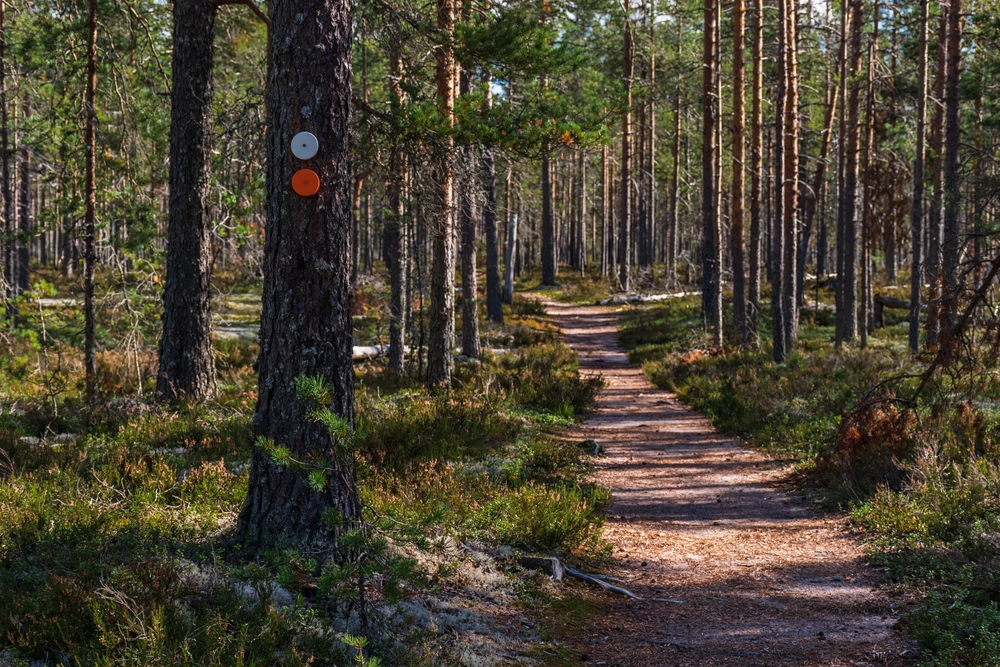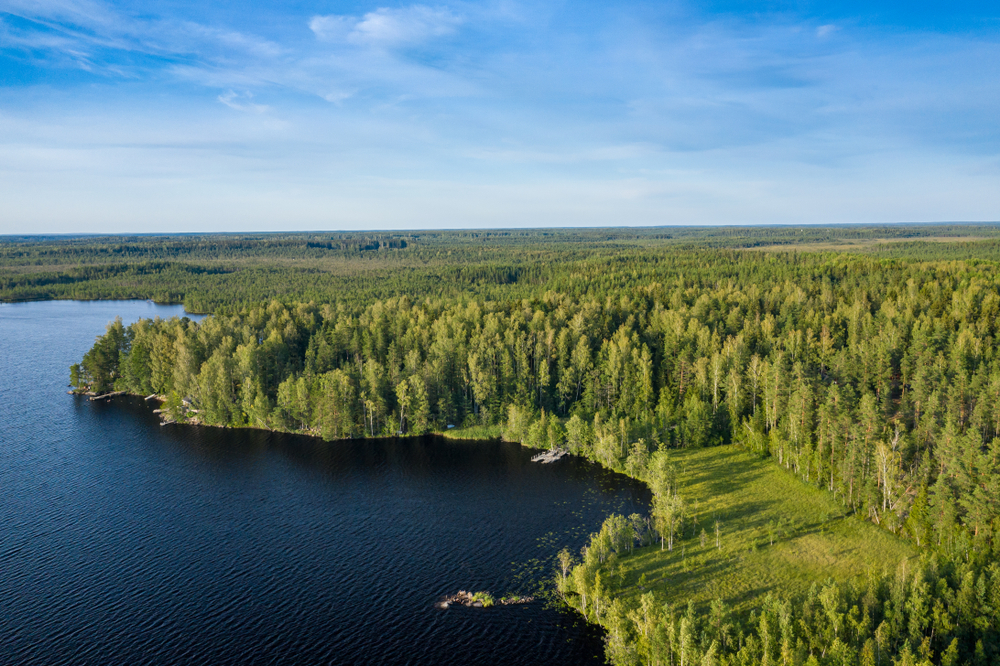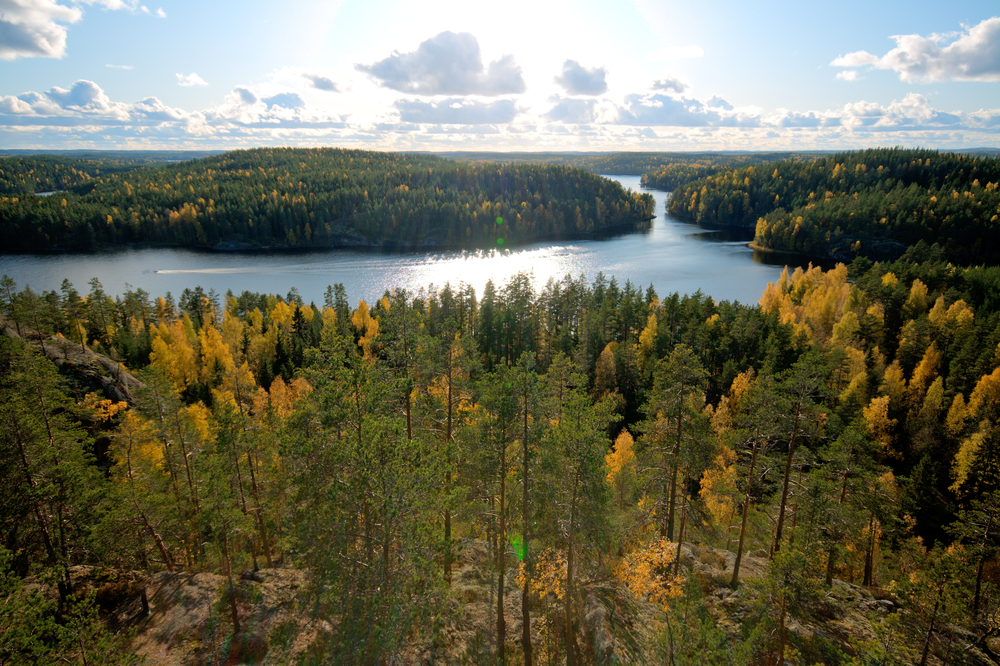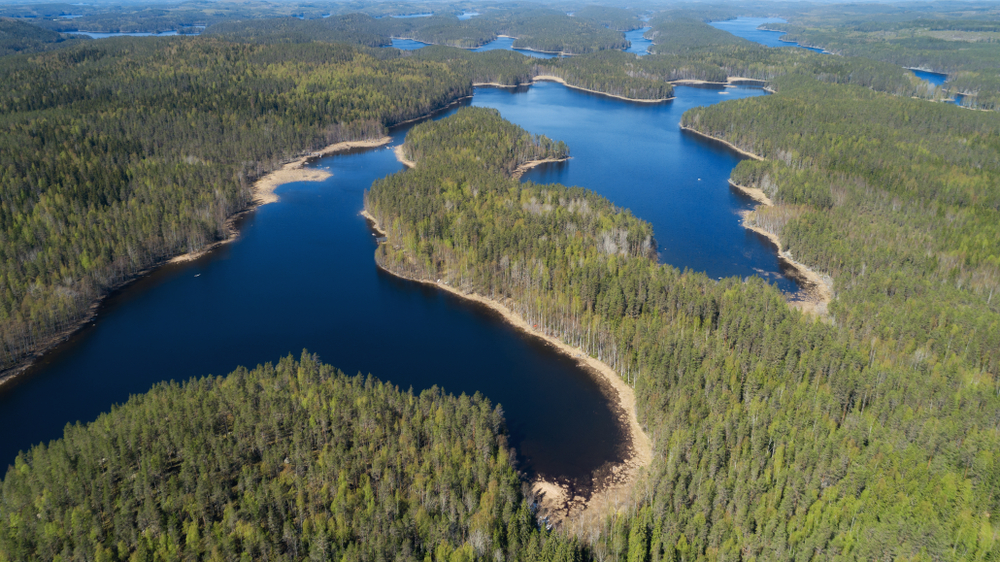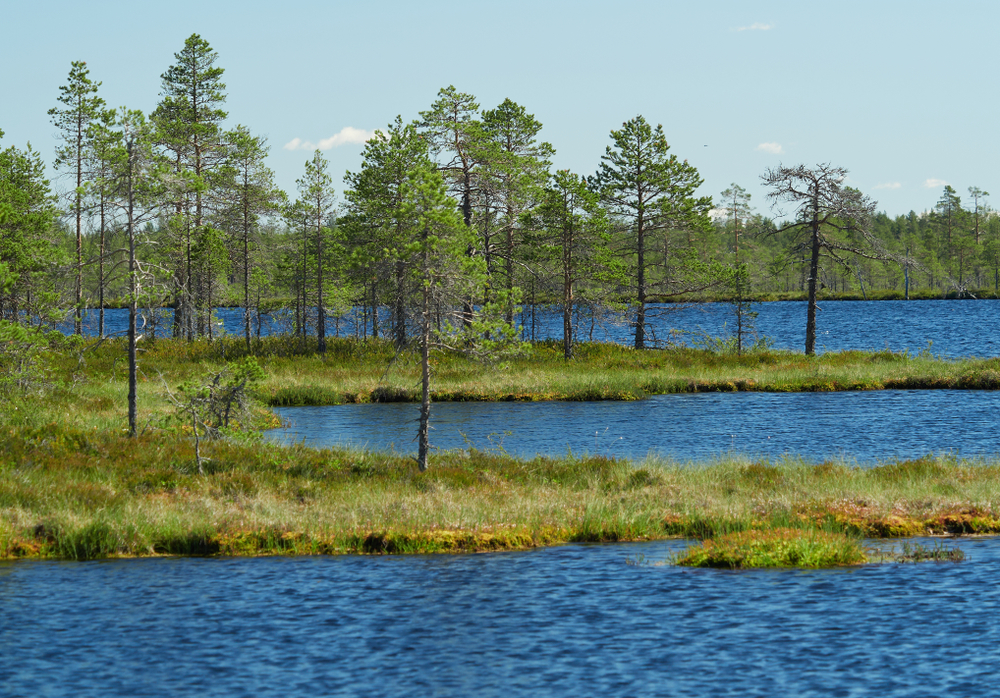Lauhanvuori Overview
Lauhanvuori National Park, or Lauhanvuoren kansallispuisto in Finnish, is located in western Finland, in the region of South Ostrobothnia. Covering approximately 24.5 square miles (63.2 square kilometers), the park is a protected area known for its distinctive geological features, diverse landscapes, and rich biodiversity.
The park is part of the UNESCO-listed Lauhanvuori-Hämeenkangas Geopark, recognized for its unique geological heritage formed by glacial activity and ancient shorelines. The park’s terrain is characterized by its rolling hills, peat bogs, and pine forests, creating an environment that contrasts with the generally flat landscapes typical of western Finland.
At its heart is Lauhanvuori Hill, one of the highest points in western Finland, rising to about 231 meters (758 feet) above sea level. The summit provides panoramic views of the surrounding lowlands and forests, making it a favorite among visitors.
The area’s bedrock is largely composed of ancient sandstone, which has been shaped by glacial and post-glacial processes. Evidence of past shorelines can be seen in the form of stone fields, remnants of an ancient seabed from a time when the region was underwater due to post-glacial rebound.
Lauhanvuori National Park’s vegetation varies from dense Scots pine and spruce forests to vast mires and open boglands. The park is particularly known for its aapa mires, a type of wetland typical of northern boreal regions.
These mires support a variety of plant species, including rare orchids and carnivorous plants such as sundews. Birch and alder trees grow along the park’s streams, while old-growth pine forests provide crucial habitat for many animal species.
Wildlife in Lauhanvuori National Park includes a variety of mammals and birds. The park is home to moose, lynx, and red foxes, as well as smaller mammals such as hares and voles. While large predators like bears and wolves are rare, they occasionally roam through the area.
Birdwatchers will find the park rewarding, as it supports species such as capercaillies, black grouse, and the Eurasian pygmy owl. Wetland areas provide habitat for cranes and wading birds, while the forests echo with the calls of woodpeckers and songbirds.
A key highlight of the park is the Lauhansarvi Nature Information Hut, which provides educational exhibits on the park’s geology, wildlife, and cultural history. Visitors can explore a network of hiking trails leading through forests, wetlands, and ancient shorelines, with well-maintained routes such as the Lauhanvuori Hiking Trail.
Cyclists can enjoy designated gravel biking routes, while winter visitors can experience cross-country skiing through the snowy landscapes. A notable feature of the park is the old sandstone well, a historical landmark offering insight into early human settlement in the region.
Lauhanvuori National Park faces conservation challenges related to climate change, habitat degradation, and invasive species. However, efforts by Finland’s Metsähallitus, the agency responsible for managing national parks, have been successful in protecting the park’s unique geological and ecological heritage.
Restoration projects have been carried out to preserve wetlands and peat bogs, which play a crucial role in carbon sequestration. The park’s inclusion in the Lauhanvuori-Hämeenkangas UNESCO Global Geopark further emphasizes its global significance in terms of conservation and education.








































































